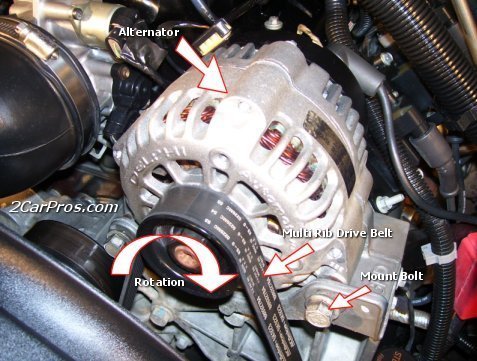You can find an unlimited supply of these connectors in any pick-your-own-parts salvage yard. The alternator shown in your photos is a Nippendenso, which Chrysler used for many years and models, starting around 1989.
I've never snipped one of these off, but if possible, try to get the entire large cable that goes all the way back to the battery, the under-hood fuse box, or to a large bullet connector, only because splicing such a fat cable is very difficult. There's two smaller wires going into that black plastic block, then they pop out as the two metal tabs that get bolted to the two small studs on the alternator. Those are easy to splice, but don't use butt connectors as those don't seal out moisture. There are some now that you don't crimp. Just slide the wires in and heat them with a hot-air gun. That melts the solder and shrinks the sealing tube. I prefer the old method of sliding the strands together, soldering them, then sealing the joints with moisture-proof heat-shrink tubing. If you mix up those two smaller wires or they have different colors, the alternator will work just fine.
If that plastic block has an eye terminal molded into it, that gets bolted to a bolt on the alternator's case. It's a mechanical means of holding it from vibration and breaking off the smaller tabs, and it's the ground for noise-cancelling circuitry inside that block.
Judging from your second photo, I have a suspicion those terminals were loose or rusty previously. That leads to electrical resistance which leads to heat buildup and melted plastic. Shine up those two terminals with sandpaper, and use a wire brush on the two studs. Those studs are very small and use lock nuts. It's not uncommon for those studs to twist off. Don't panic if that happens. You can remove the stamped rear cover by removing three or four nuts, then the brush assembly can be removed by removing three small bolts. Two of those bolts attach to the assembly that has those two small studs. At this point I don't remember what it takes to get that assembly out, but it's pretty easy and self-explanatory. You can take that assembly to a workbench, then use a small punch and hammer to drive the broken stud out. I had to do this on one of my older Caravans. I used a regular bolt to replace the stud.
By the way, that brush assembly is available separately if they wear down. Cost is less than $15.00 from a starter / generator rebuilder. Most larger cities have one or two of those companies. If you can't find one, ask the people in the repair department of any large truck repair shop who they use. Often this brush assembly can be replaced without removing the alternator from the engine. It depends on which engine it's mounted on.
Sunday, November 3rd, 2024 AT 4:49 PM






